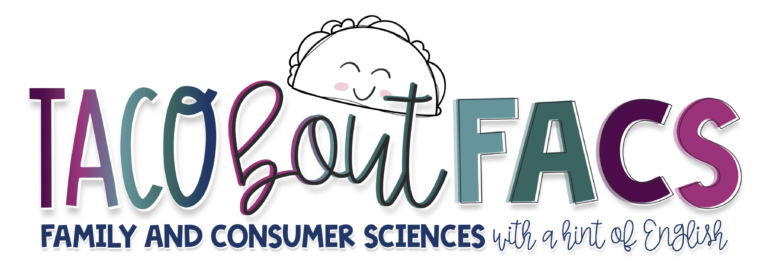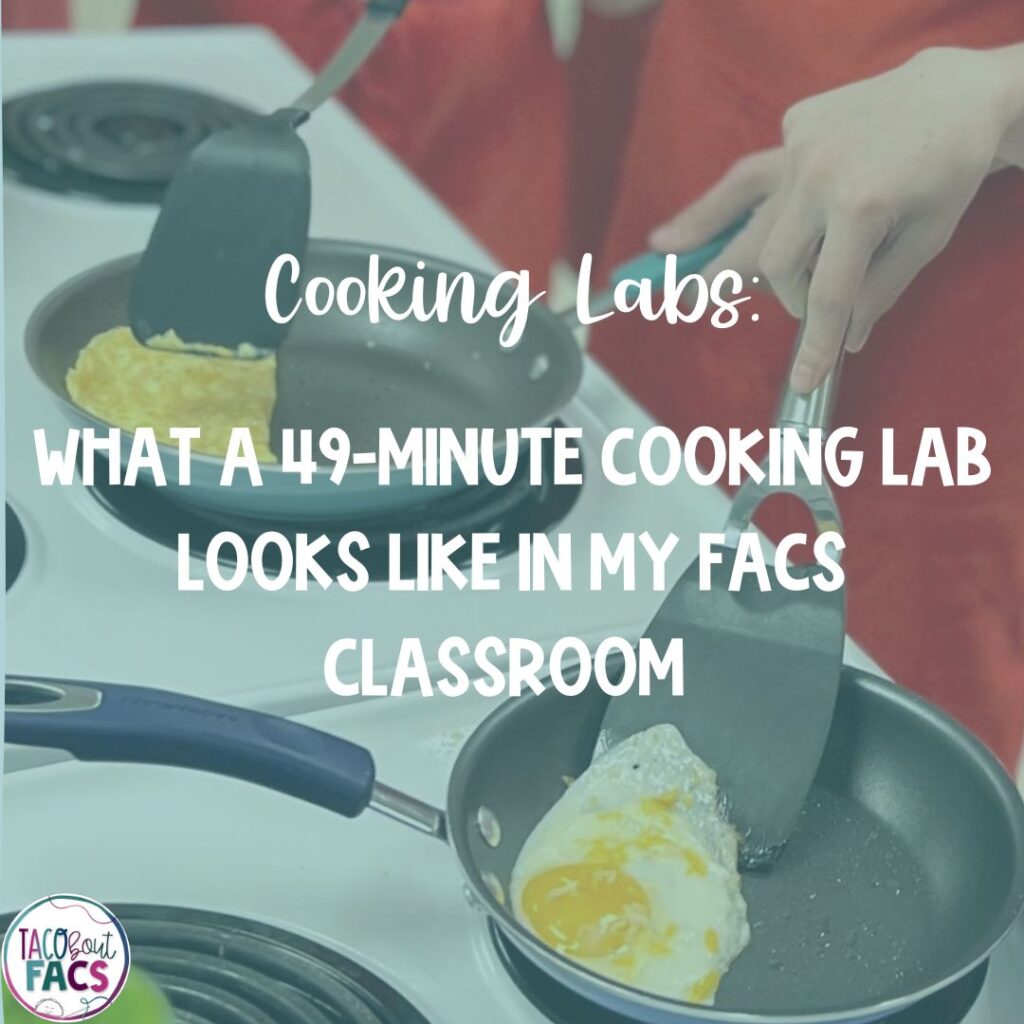49 minutes can be a whirlwind for cooking labs. You can either accomplish a lot or very little. 49 minutes can also greatly limit recipes when you include prep, cooking, and clean up. Here’s a closer look at what a 49-minute lab looks like in my classroom for 7th and 8th graders.
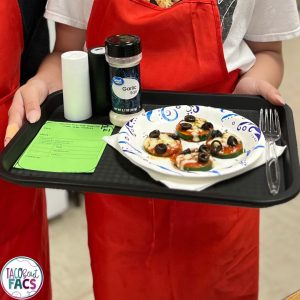
Before the food lab
One thing I make very clear to my students is that I am not here to babysit in the kitchen. Babysitters are here to monitor behavior and there isn’t enough time and energy for that kind of nonsense. If you are not keeping yourself or others safe, you will not stay in the kitchen.
Has it upset parents before when their child missed out on a lab? Yes. Do I mind? No. The consequences of unsafe decisions in the kitchen are far too risky than students missing out on a lab.
If parents are unable to see that perspective when 28-30 students are cooking at the same time, I’d invite them to open their home kitchen to 30 students and expect them to safely complete a recipe and clean the kitchen.
On that same note, I spend at least a week and a half teaching students about being safe in the kitchen and how labs will work. We take notes on various aspects of meal planning, food allergies, food safety, and more. We also spend time on time management.
I like to use a reverse elapsed time to create a sense of urgency.
For example, we discuss the first recipe- omelets to determine how much time is needed.
If there are 49 minutes and it’s our first lab, it will likely take 10-15 minutes to clean. We will say your group is pretty with it and is able to clean in 10 minutes. 49-15 minutes is 39 minutes.
It will take 3-5 minutes per omelet. The first couple will likely take a bit longer than the rest. You can 7 people in a cooking group, we will average it and say 7×4 is 28 minutes. This leaves us with 11 minutes.
Your group needs to collect ingredients and equipment at the start of the lab. This usually takes about 10 minutes, so you’d roughly have about 1 minute left for wiggle room and eating.
Students can quickly see how easily they can waste time in the classroom.
Some groups manage to pull it off and have a little time left over, while others need this first lab to be a learning experience.
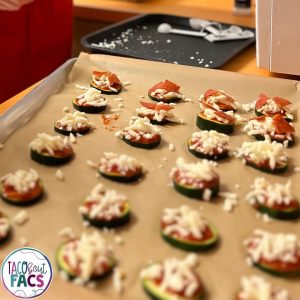
Cooking Lab Days
I always use an attendance question to start class, but we don’t have time to spare on lab days. I have a checklist rubric I also use for attendance when we are in labs. I take the time before the lab to write names in order of groups. It makes it much easier to take attendance.
I learned the hard way of putting the names in alphabetical order and it took way too much time looking all around to keep everything straight.
What if we don’t finish in time?
For labs like the omelet lab, I have students in the kitchen the day before to practice cutting the ingredients for omelets. It’s much calmer to only have prep work, it gives them an idea of what to expect, and it gets ingredients ready for the next day.
I also make it known to students if your group is on task, working the entire time, and still needs more time, I will gladly write a tardy pass. I have preprinted passes made up and only need to add the student name and time left.
I will not write a tardy pass if the group is goofing off, silly, or not using their time wisely. It’s a natural consequence at that point and usually, it only takes one or two groups to learn the hard way.
My building has 4-minute passing periods so I also don’t have time for groups to linger if they are not working. The next class is usually waiting for permission to enter the kitchen, which means I need to get the kids out quickly.
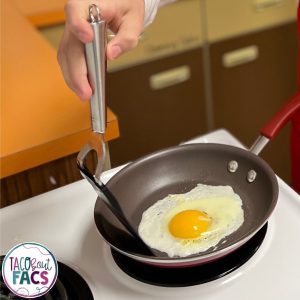
Prep Work
Cooking groups also spend the day before the lab writing a food lab plan. They don’t always like this because they need to think about what equipment and ingredients are needed. I want to know the specifics.
If we are making the omelet lab, I want to know how many tablespoons of diced ham, shredded cheese, etc for each person. This allows the group a chance to think through the recipe and make the most of their time.
The day after a cooking lab, students will complete a digital cookbook including the recipe and a reflection form. The reflection form allows students a chance to secretly rat out any student who wasn’t fulfilling duties and complement leaders within their group.
This consistency happens before, during, and after each lab. The structure and consistency also make it easier each time we have a cooking lab.
Looking for Resources?
If you are looking for 6-8 weeks of content for a complete unit with notes, presentations, games, an escape room, career exploration, 6 food labs, and more, check out this resource.
In case you missed it, you can also get this “Why FACS?” Digital and Print Escape Room for free! Read more about it here.
